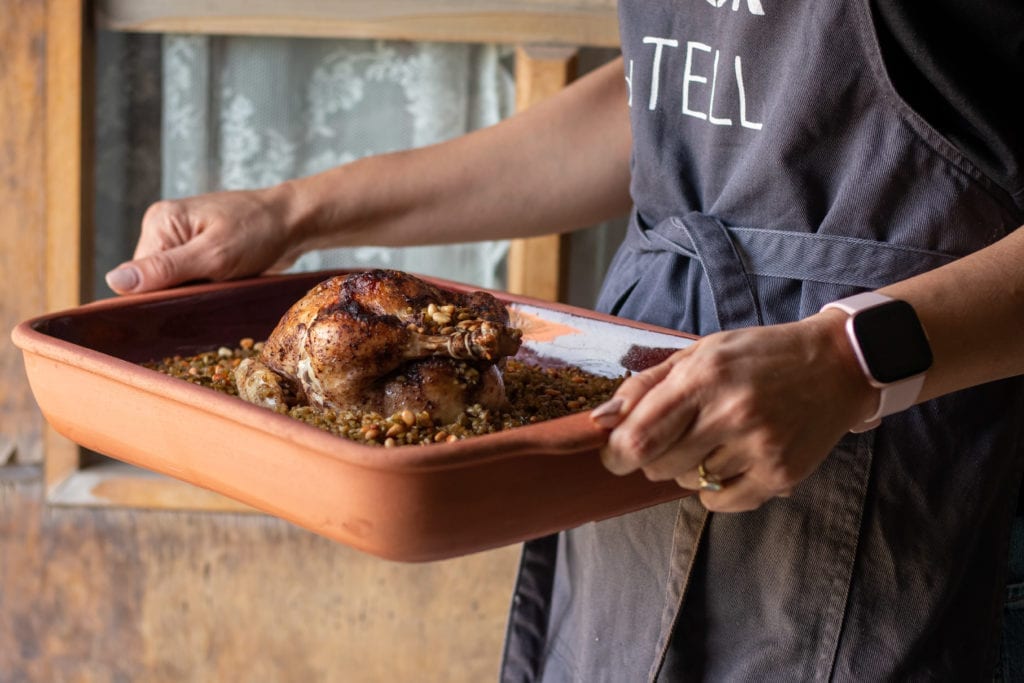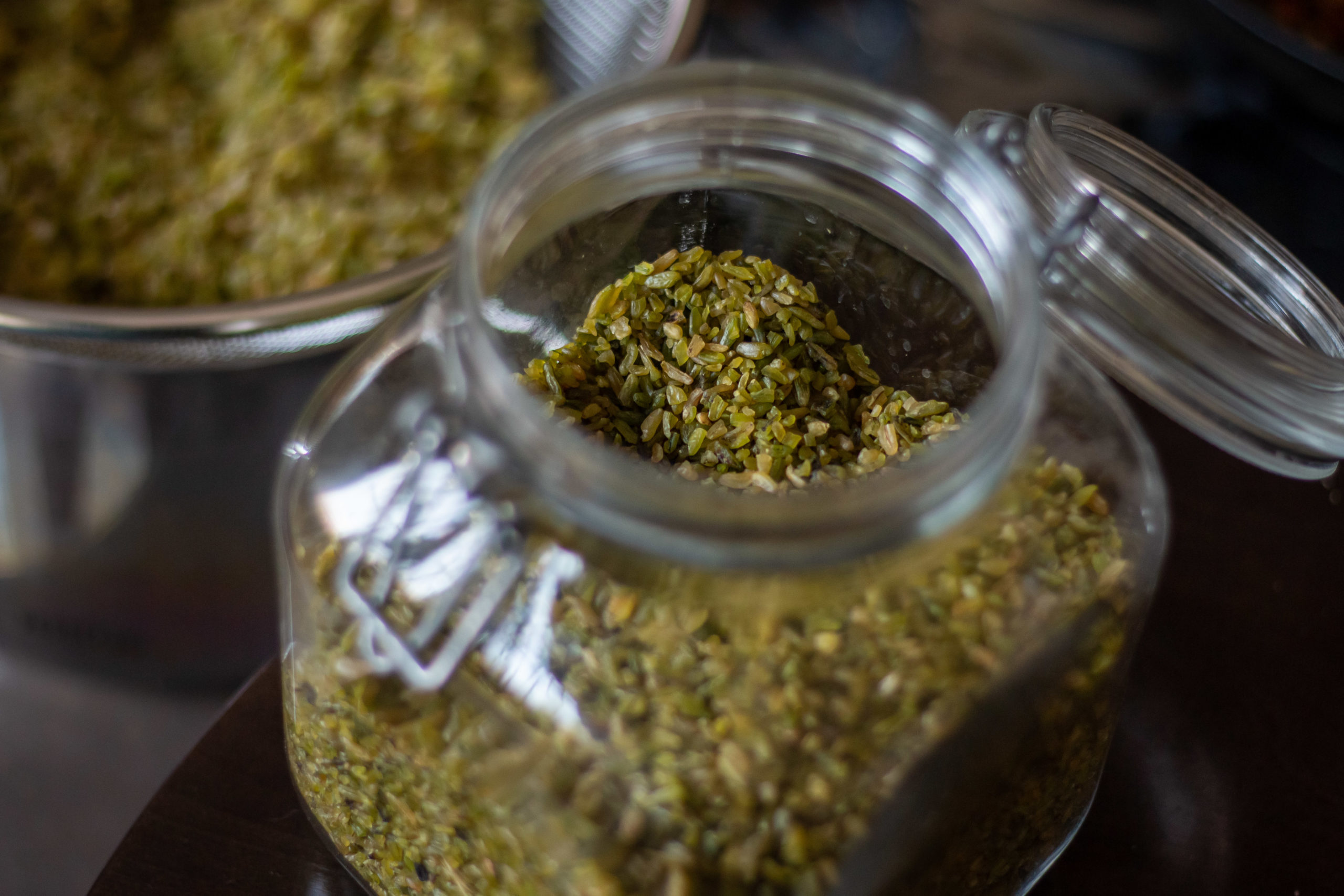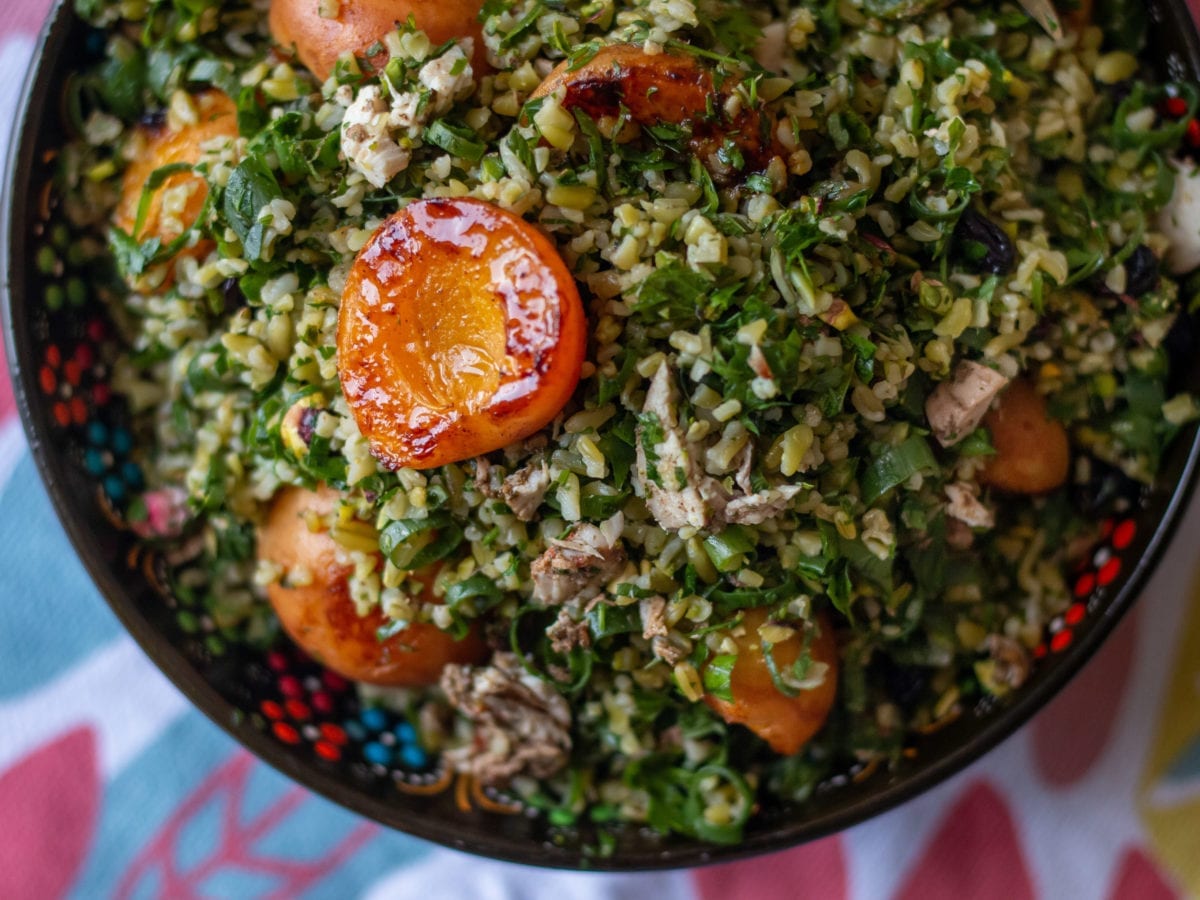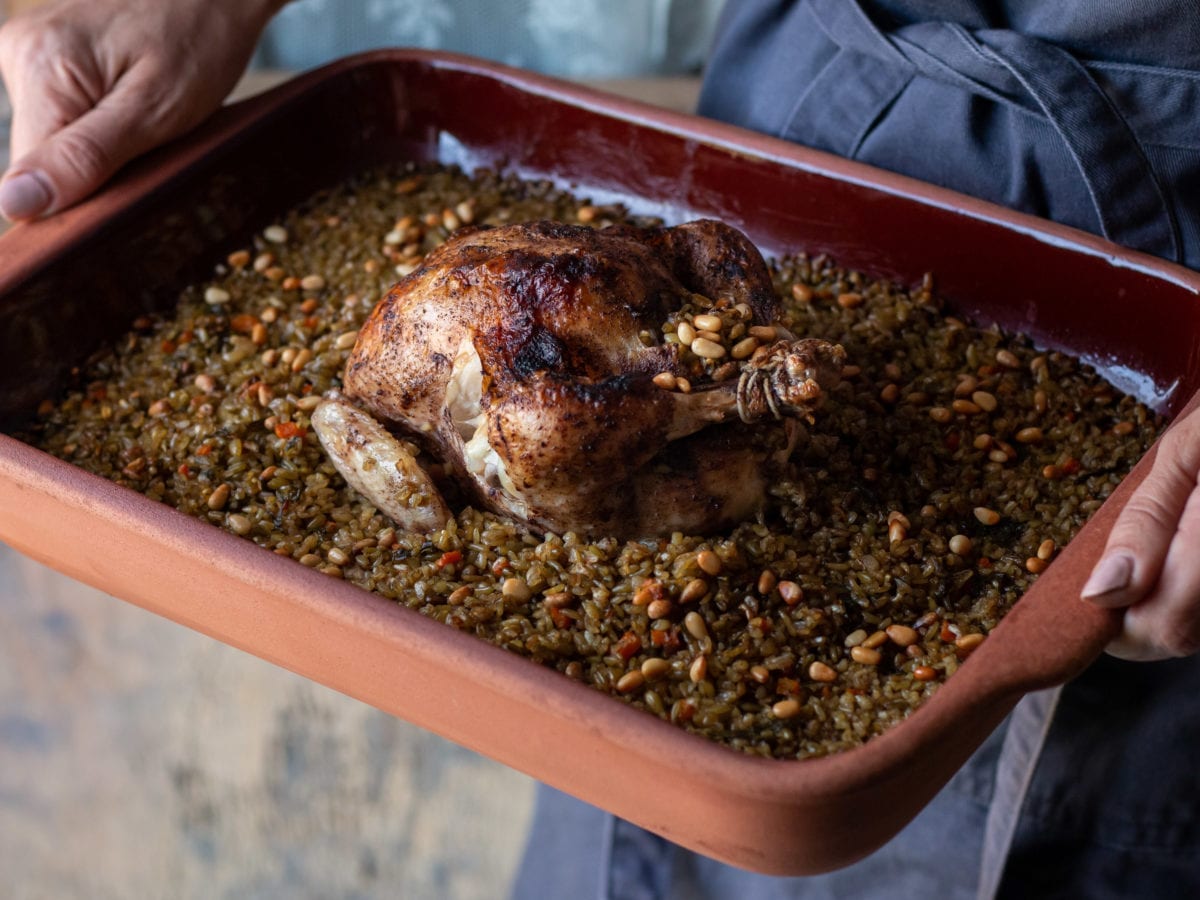Muzna Bishara is a dentist and passionate cook, born and raised in Kafr Qara, close to the Triangle region. Each month in her column, she will explore an aspect of the Palestinian kitchen from a historical and personal perspective and will share two recipes — one traditional and one modern.
In my childhood in Kafr Qara, I spent countless days with my cousins in the yard of my grandpa Suleiman and grandma Maryam’s home. We all waited expectantly for the hot, dry days of April, when my grandmother would spread bed sheets on the porch, and scatter the freekeh kernels (smoked green wheat) that had just been burned in the Galilean wheat fields. We would take advantage of every moment that she wasn’t looking to munch handfuls of green wheat, with its divine earthy, smoky taste. It sparked my love of smoky flavors — freekeh in particular.
A Bit of History
How did freekeh come about? Popular legend has it that the fields of a village were burned by invaders. When the villagers tried to save some of the crop, they discovered a new way of eating wheat. Modern research connects the custom to the end of winter, when the grain silos were almost empty. The farmers needed a source of carbohydrates and so they ate the green wheat before it was dry enough for the flour mill.

Henry Baker Tristram, a British clergyman and scholar, who traveled to here in the 19th century and wrote “The Land of Israel: A Journal of Travel in Palestine,” described the preparation of freekeh:
“Many fires were lighted… by the shores of the [Sea of Galilee]… A few sheaves of wheat had been brought down from the fields above; these were tossed on the fire, and as soon as the straw was consumed, the charred heads were dexterously swept from the embers onto a cloak spread on the ground. The women of the party then beat the ears and tossed them into the air until they were thoroughly winnowed, when the wheat was eaten without further preparation.”
The green, smoked wheat is described in the Hebrew Bible as “new ears parched with fire,” and the word “freekeh” comes from the same root as the Arabic word “to rub between the hands,” nodding to the way farmers once separated the freekeh kernels from the stalks. The traditional way of preparation can still be seen in the fields of the Galilee at the end of April. The sheaves are brought in when they are still green, just before they dry out, then burned in large bonfires, and beaten to separate the kernels from the stalks. Next, the kernels are ground to various degrees of fineness and stored for future use.
From Palestine to Tunisia
For many years, the term freekeh was used in the Palestinian kitchen, especially in the Triangle region, to describe the raw ingredient — smoked green wheat — as well as the a popular dish they made with it: freekeh soup. The recipe called for a rich, concentrated chicken stock, flavored with herbs, spices and root vegetables, and freekeh kernels, somewhat finely ground. The soup is a classic Palestinian dish to this day.

I was 9 when my family took a trip to Egypt. For years, we had watched the Egyptian movies that aired on Israeli television every Friday afternoon, and through them were exposed to dishes that were unknown locally, like “hamam mahshi bel frik” (braised pigeon stuffed with freekeh). At last I was able to try it. I was also able to try a dish with a new texture — the kernels separated like rice. The result is soft but coarse at the same time — and addictive! Later, with the arrival of TV cooking programs from around the Arab world, and chef-restaurants in the Galilee that were inspired by the cuisines of Syria and Lebanon, we began to discover additional ways of preparing freekeh, particularly as a filling for slow-cooked mutton or lamb dishes.
“With the arrival of TV cooking programs from around the Arab world, and chef-restaurants in the Galilee that were inspired by the cuisines of Syria and Lebanon, we began to discover additional ways of preparing freekeh.”
— Muzna Bishara
Freekeh is common in other cuisines from the Levant to North Africa. “Shorba frik,” for example, is a Tunisian soup made with freekeh and bone marrow. Jordan’s famous dish is a freekeh pilaf with grilled lamb, peas, and pine nuts. The Syrians have the same dish, but add butter and almonds, and the Lebanese serve it with chicken. Farther north, in Turkey, the menu may include an Anatolian specialty, “firik pilabi,” which mixes freekeh with bulgar wheat, pulses, and a variety of herbs.
Nowadays, I use freekeh as much as possible as a healthy and nutritious local carb. It is my substitute for rice in many dishes, from stuffed vegetables and beef to maqluba and as an accompaniment to nuts and seeds. Over time, I have also begun using freekeh in dishes that are outside the Arab tradition, like risotto and paella.

The Basic Recipe
Fresh freekeh needs relatively little time to cook, about the same as white rice. The fresher it is, the less time it takes and the more prominent its unique aroma will be. You can find freekeh in produce markets and health-food stores in the region and in Middle Eastern grocery shops overseas. Store it in the refrigerator or freezer to preserve its smoky aroma for a longer period.
What is the most basic method of preparing freekeh? Heat 3-4 tablespoons of olive oil in a pot, preferably non-stick. Add a cup of washed and drained freekeh. Fry the wheat kernels for 3-5 minutes, then add 1¾ cups of boiling water, a pinch of salt, and whatever spices you like. It goes well with dried hyssop, zaatar, baharat, or allspice. Bring to a boil, cover it, and lower the flame. Let it cook for another 15-20 minutes until all the liquid is absorbed (the cooking time depends on the freshness of the freekeh).


